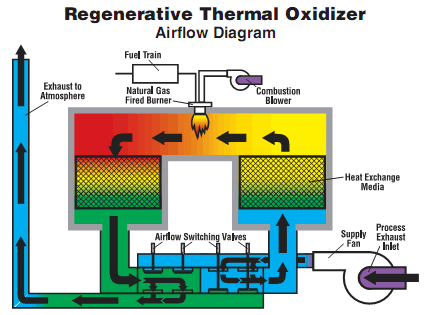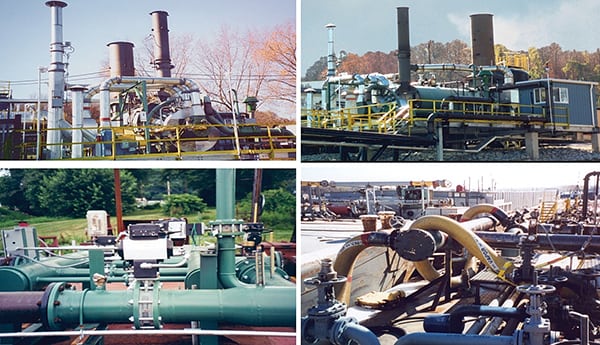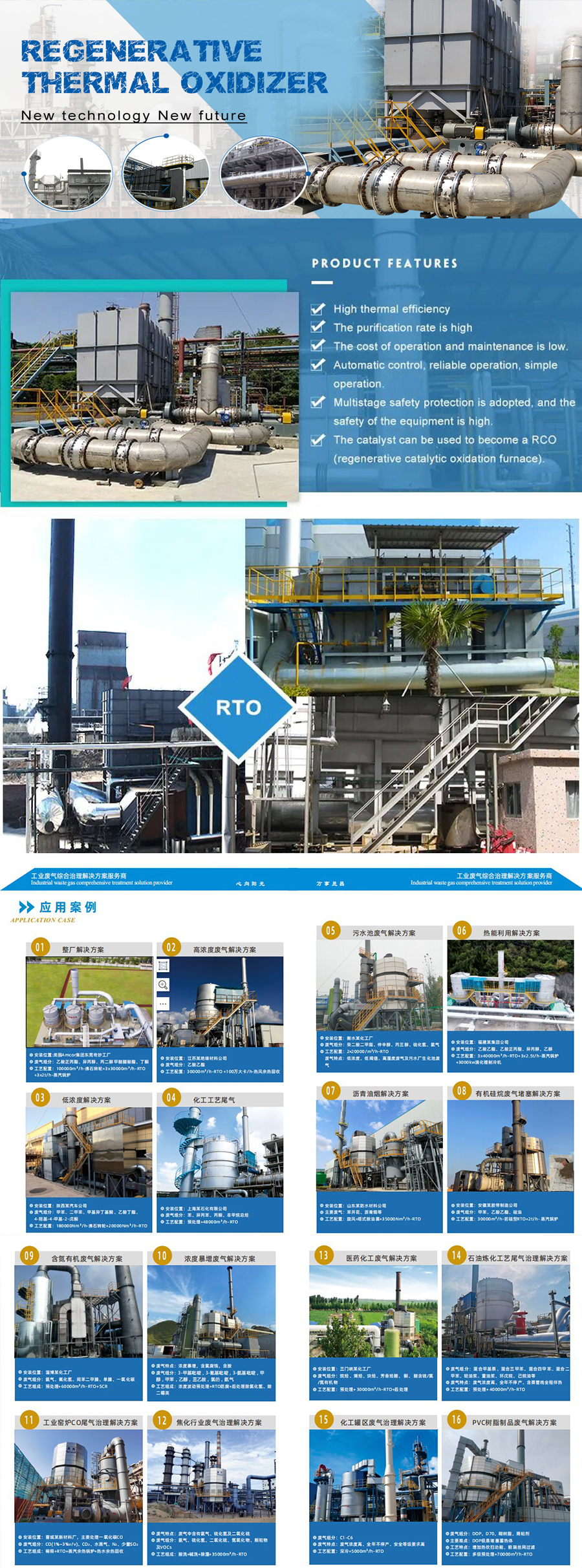基本情報
モデルNO.
驚くべき触媒作用
タイプ
焼却炉
省エネ
100
優れた素材
100
高効率
100
商標
ビジャマジング
輸送パッケージ
海外パッケージ
仕様
111
起源
中国
HSコード
111111
商品説明
アキュムレーター・セラミック
RTOはセラミックアキュムレータを採用し、蓄熱性能に優れ、熱損失が少なく、熱交換効率が高い。
陶磁器の蓄積ボディは LANTEC MLM シリーズ プロダクトを採用します、大きい比表面積、小さい抵抗、大きい熱容積の利点を具体化します、耐熱性は 1200ºC まで、高い反酸の固着、小さい吸水、小さい熱拡張係数、よりよい反割れる能力、長い寿命できます 指定
High Temperature Air Combustion Technology(HTAC) have dual effects on energy saving and environment protection. Comparing with the conventional combustion technology, CHINAMFG will save approximately 20-50% fuels, decrease the oxidation and lgnition loss by 20%,reduce NOx emissions by 40% and bring up the production output > 20%.
** 長さ*幅*高さ(mm) |
チャンネル数 |
チャンネル幅 |
肉厚 |
側壁の厚さ |
比表面積 |
ヴォイド% |
セクション形状 |
200*100*100 | 20*9 | ¢8.5 ラウンドチャンネル | 2.3 | 2.5 | 280 | 51 |
|
150*100*100 | 36*24 | ¢3*3 正方形チャンネル | 1.1 | 1.2 | 734 | 52 |
|
150*100*100 | 35*20 | ¢4 六角チャネル | 1.0 | 1.2 | 687 | 65 |
|
150*100*100 | 10*6 | ¢12 六角チャネル | 4.0 | 4.0 | 210 | 50 |
|
150*100*100 | 35*20 | ¢3.5 六角チャネル | 1.5 | 1.5 | 570 | 50 |
|
150*100*100 | 17*13 | ¢7.5 ラウンドチャンネル | 1.2 | 1.3 | 366 | 57 |
|
150*100*100 | 33*19 | ¢4 ラウンドチャンネル | 1.0 | 1.3 | 568 | 53 |
|
150*100*100 | 15*9 | ¢8.5 ラウンドチャンネル | 2.3 | 2.5 | 280 | 51 |
|
150*100*100 | 38*22 | ¢3.6 六角チャネル | 0.9 | 1.2 | 696 | 63 |
|
150*100*100 | 42*28 | ¢2.6*2.6 正方形チャンネル | 1.0 | 1.1 | 815 | 53 |
|
100*100*100 | 7*6 | ¢12 六角チャネル | 4.0 | 4.0 | 224 | 52 |
|
100*100*100 | 31*31 | ¢2.65*2.65 正方形チャンネル | 0.55 | 0.7 | 1065 | 67 |
|
100*100*100 | 24*24 | ¢3*3 正方形チャンネル | 1.1 | 1.2 | 741 | 52 |
|
100*100*100 | 23*20 | ¢4 六角チャネル | 1.0 | 1.2 | 608 | 84 |
|
100*100*100 | 10*9 | ¢8.5 ラウンドチャンネル | 2.3 | 2.5 | 280 | 51 |
|
セラミックアキュムレータ、セラミックアキュムレータ、セラミックアキュムレータ、ハニカム
住所 中華人民共和国浙江省亦荘市地城西路濱偉大厦E1 8階
ビジネスタイプ メーカー/工場, 商社
事業範囲 電気・電子、産業機器・部品、製造・加工機械、冶金・鉱物・エネルギー
マネジメントシステム認証 ISO9001、ISO14001
主要製品 Rto、カラーコーティングライン、亜鉛メッキライン、エアナイフ、加工ライン用スペア、コーター、独立機器、シンクロール、改造プロジェクト、ブロワー
会社紹介 浙江驚科技有限公司は浙江経済技術開発区(BDA)に位置する盛んなハイテク企業です。現実的、革新的、集中的、効率的という理念を堅持し、主に中国及び全世界の廃ガス処理(VOCs)産業と冶金設備にサービスを提供しています。弊社はVOCs廃ガス処理プロジェクトにおいて先進的な技術と豊富な経験を持っており、コーティング、ゴム、電子、印刷などの業界への応用に成功しています。また、平鋼加工ラインの研究と製造において、長年の技術蓄積を持っており、100近くの応用例を持っています。
弊社はVOCs有機廃ガス処理システムの研究、設計、製造、据付、試運転と平鋼加工ラインの省エネと環境保護のための改造と更新プロジェクトに重点を置いています。弊社は環境保護、省エネ、製品の品質向上などの方面で、お客様に全面的な解決案を提供することができます。
また、ローラー、カプラー、熱交換器、レキュペレーター、エアナイフ、ブロワー、溶接機、テンションレベラー、スキンパス、エキスパンションジョイント、シャー、ジョインター、ステッチャー、バーナー、ラジアントチューブ、ギアモーター、減速機など、カラーコーティングライン、亜鉛メッキライン、酸洗ラインの各種スペアや独立した設備も手掛けています。

再生熱酸化装置は小規模用途に適しているか?
再生熱酸化装置(RTO)は、その特殊な特性と運転要件から、主に中規模から大規模の工業用途向けに設計されている。しかし、小規模用途への適性は様々な要因に左右される:
- プロセス排気量: 小規模アプリケーションから発生する排気量は、RTO使用の実現可能性を決定する上で重要な役割を果たす。RTOは通常、大量の排気を処理するように設計されており、小規模アプリケーションからの排気量が少なすぎる場合、RTOを使用するのは費用対効果や効率が悪い可能性がある。
- 資本コストと運営コスト: RTOは、購入、設置、運用に費用がかかる。排気量や汚染物質濃度が比較的低いことを考慮すると、小規模な用途に必要な設備投資は正当化できないかもしれない。さらに、エネルギー消費とメンテナンスを含む運転コストは、小規模運転の利点を上回る可能性がある。
- スペースの空き状況 RTOは、設置にかなりの物理的スペースを必要とする。小規模なアプリケーションではスペースに制限があり、RTOシステムのサイズやレイアウトの要件を満たすことが難しい場合があります。
- 規制要件: 小規模の用途は、大規模な工業操業と比較して、異なる規制要件の対象となる場合がある。小規模用途に適用される特定の排出制限及び大気質基準は、確実に遵守するために考慮されなければならない。触媒酸化装置やバイオフィルターなど、小規模用途により適した代替排出規制技術が利用可能な場合もある。
- プロセスの特徴: 小規模アプリケーションの排気流の性質(汚染物質の種類と濃度を含む)は、排出制御技術の選択に影響を及ぼす可能性がある。RTOは、高濃度の揮発性有機化合物(VOCs)と有害大気汚染物質(HAPs)を伴う用途に最も効果的である。小規模用途の汚染物質プロファイルが異なる場合は、代替技術がより適切な場合がある。
RTOは、一般に中規模から大規模の用途に適しているが、RTOの使用を検討する前に、個々の小規模用途に固有の要件、制約、および費用便益分析を評価することが重要である。小規模運転により適した代替排出制御技術も評価されるべきである。

Can regenerative thermal oxidizers handle corrosive exhaust gases?
Regenerative thermal oxidizers (RTOs) can be designed to handle corrosive exhaust gases effectively. However, the ability of an RTO to handle corrosive gases depends on several factors, including the choice of construction materials, operating conditions, and the specific corrosive nature of the exhaust gases. Here are some key points regarding the handling of corrosive exhaust gases in RTOs:
- Material Selection: The selection of appropriate construction materials is crucial when dealing with corrosive gases. RTOs can be constructed using materials that offer high resistance to corrosion, such as stainless steel, corrosion-resistant alloys (e.g., Hastelloy, Inconel), or coated materials. The choice of materials depends on the specific corrosive compounds present in the exhaust gases and their concentrations.
- Corrosion-Resistant Coatings: In addition to selecting corrosion-resistant materials, applying protective coatings can enhance the resistance of the RTO components to corrosive gases. Coatings such as ceramic coatings, epoxy coatings, or acid-resistant paints can provide an extra layer of protection against corrosion.
- Temperature Control: Maintaining appropriate operating temperatures in the RTO can help mitigate the corrosive effects of the exhaust gases. Higher temperatures can promote the decomposition of corrosive compounds, reducing their corrosive potential. Additionally, operating at higher temperatures can enhance the self-cleaning effect and prevent the accumulation of corrosive deposits on the surfaces.
- Gas Conditioning: Prior to entering the RTO, the exhaust gases can undergo gas conditioning processes to reduce their corrosive nature. This may involve pre-treatment methods such as scrubbing or neutralization to remove or neutralize corrosive compounds and reduce their concentration.
- Monitoring and Maintenance: Regular monitoring of the RTO performance and periodic maintenance are essential to ensure the effective handling of corrosive exhaust gases. Monitoring systems can track variables such as temperature, pressure, and gas composition to detect any deviations that may indicate corrosion-related issues. Proper maintenance, including cleaning and inspection of the components, helps identify and address any corrosion concerns in a timely manner.
It is important to note that the corrosiveness of exhaust gases can vary significantly depending on the specific industrial process and the pollutants involved. Therefore, when designing an RTO for handling corrosive gases, it is advisable to consult with experienced engineers or RTO manufacturers who can provide guidance on the appropriate design considerations and material selection.
By employing suitable materials, coatings, temperature control, gas conditioning, and maintenance practices, RTOs can effectively handle corrosive exhaust gases while ensuring their long-term performance and durability.

再生熱酸化装置の仕組みは?
再生熱酸化装置(RTO)は、排気ガスから揮発性有機化合物(VOC)、有害大気汚染物質(HAP)、およびその他の空気中の汚染物質を除去するために、循環プロセスを通じて動作する高度な大気汚染防止装置です。ここでは、RTOの仕組みについて詳しく説明する:
1.インレットプレナム: 汚染物質を含む排気ガスは、インレットプレナムを通ってRTOに入る。
2.熱交換器ベッド RTOは、蓄熱媒体、典型的にはセラミック材料または構造化パッキンで満たされた複数の熱交換器ベッドを含む。熱交換器ベッドは対になって配置されている。
3.流量制御バルブ: 流量制御弁は、気流を整流し、RTOを通過する排気ガスの方向を制御する。
4.燃焼室: 燃焼室に導かれた排気ガスは、通常760°C(1400°F)から870°C(1600°F)の高温に加熱される。この温度範囲により、汚染物質の効果的な熱酸化が保証される。
5.VOC破壊: 燃焼室内の高温により、VOCやその他の汚染物質が酸素と反応し、熱分解または酸化される。この過程で汚染物質は水蒸気、二酸化炭素、その他の無害なガスに分解される。
6.熱回収: 燃焼室を出た高温で浄化されたガスは、出口プレナムを通過し、作動の逆相にある熱交換器ベッドを流れる。熱交換器ベッド内の蓄熱媒体は、排出ガスから熱を吸収し、流入する排気ガスを予熱します。
7.サイクル切り替え: 特定の時間間隔が経過すると、流量制御弁が気流の方向を切り替え、流入ガスを予熱していた熱交換器床が、今度は燃焼室からの高温ガスを受け取るようにする。このサイクルが繰り返され、連続的かつ効率的な運転が保証される。
再生熱酸化装置の利点:
RTOは、産業用大気汚染防止においていくつかの利点を提供する:
1.高効率: RTOは、通常95%以上の高い破壊効率を達成し、幅広い汚染物質を効果的に除去することができる。
2.エネルギー回収: RTOの熱回収メカニズムは、大幅なエネルギー節約を可能にする。流入ガスの予熱は、燃焼に必要な燃料消費を削減し、RTOをエネルギー効率の高いものにしている。
3.費用対効果: RTOの初期設備投資は多額になる可能性があるが、エネルギー回収と高い破壊効率による長期的な運転コストの削減により、システムの寿命を通じて費用対効果の高いソリューションとなる。
4.環境コンプライアンス: RTOは、厳しい排出規制を満たし、産業界が大気質基準や許認可を遵守できるように設計されている。
5.汎用性: RTOは幅広いプロセス排気量と汚染物質濃度に対応できるため、さまざまな産業用途に適している。
全体として、再生熱酸化装置は、熱回収、高温燃焼、循環的な流量制御を利用することで、汚染物質を効果的に酸化し、エネルギー消費を最小限に抑えながら高い破壊効率を達成する。

editor by CX 2023-10-21
